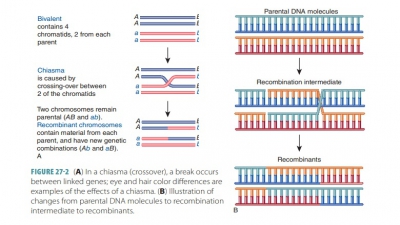Summary
| Home | | Anatomy and Physiology | | Anatomy and Physiology Health Education (APHE) |Chapter: Anatomy and Physiology for Health Professionals: Heredity
The field of genetics studies how children inherit traits from their parents and relatives as determined by DNA.
Summary
The field of genetics studies how children inherit traits
from their parents and relatives as determined by DNA. While a karyotype is a
representation of a person’s chromosomes, his or her complete genetic
complement is the genome. The combination of varying forms of genes, called
alleles, makes up a person’s genotype. When an allele pair is identical, the
individual is homozygous for that trait. When alleles are different, the
individual is heterozygous. A genotype is the actual genetic makeup of cells. A
phenotype is the way in which these genes are expressed. Genetic variation
occurs because of inde-pendent assortment, homologue crossover, and random
fertilization.
Patterns of inheritance through families are called modes of
inheritance, which include autoso-mal recessive, autosomal dominant, and
X-linked recessive. Genetic disorders usually reflect homozy-gous recessive
conditions. Carriers are heterozygotes that do not express a trait but can pass
it to their offspring. Traits determined by genes on the X and Y chromosomes
are called “sex-linked traits.” Gene expression can be influenced or overridden
by envi-ronmental factors. Inheritance may be determined by factors other than
nuclear DNA sequence, which include protein-coding genes, RNA-only genes, and
epigenetic marks. Advances in genetics, including the outstanding results of
the Human Genome Proj-ect, are improving treatments and even cures for a large
variety of diseases and disorders linked to gene and chromosomal defects.
Procedures used to check for genetic conditions include pedigrees,
amniocen-tesis, CVS, and blood tests.

